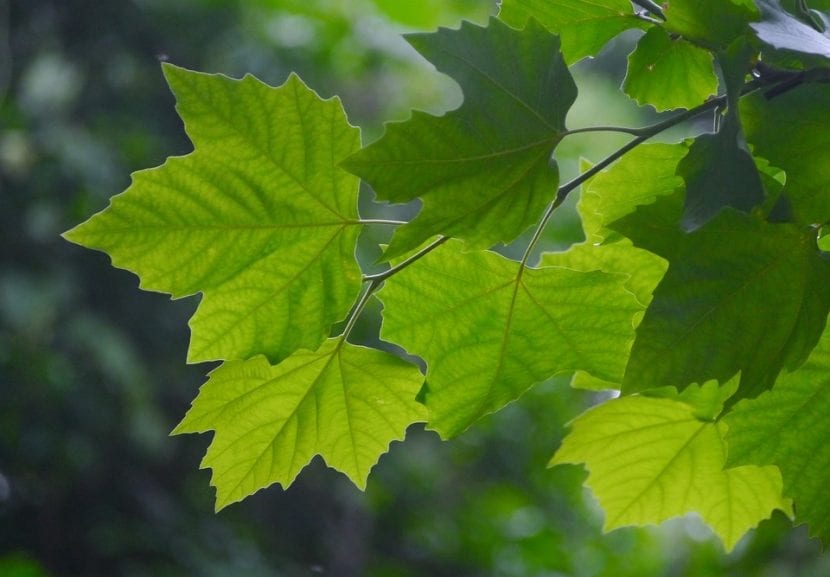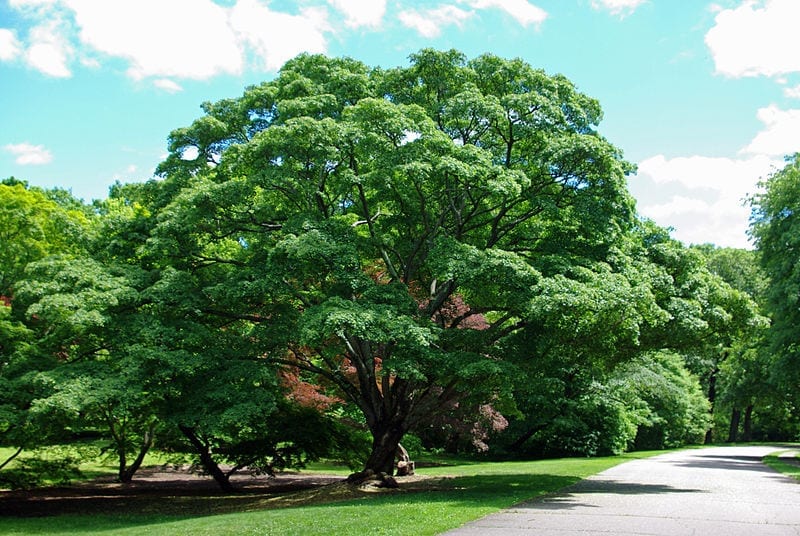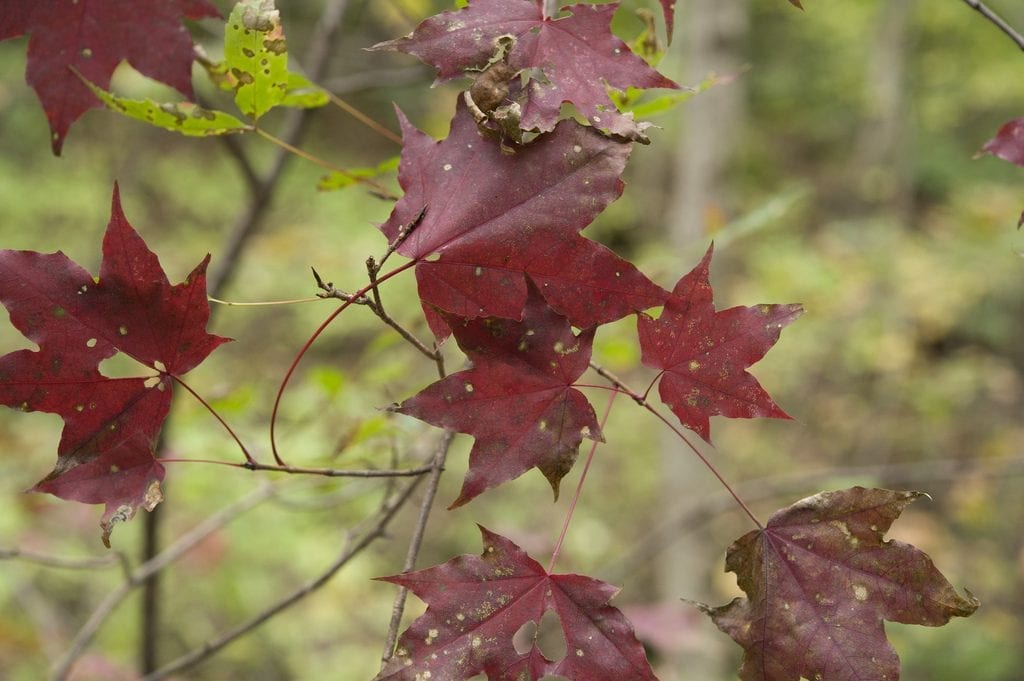
The trees and shrubs of the Acer genus are wonderful… all of them. But this time I'm going to tell you about acer monkey, which is a woody plant that grows tall enough to provide very good shade.
It is perfect for those medium or large gardens where the passing of the seasons becomes very visible, the pity is that it is not well known yet. Hopefully this article helps to get to know a little more 🙂.
Origin and characteristics

Our protagonist it is a deciduous tree native to China, southeastern Siberia, Korea and Japan whose scientific name is Acer mono. It is popularly known as painted maple, and reaches a height of 10-12 meters. Its crown is somewhat pyramidal and wide, 4-5 meters in diameter. The trunk is more or less straight, with a smooth yellowish-gray bark, and its crown is highly branched.
The leaves have 5-7 triangular lobes 8-15cm long, and are green on both sides except in autumn when they turn reddish before falling. The flowers are yellow, and are arranged in corymbs 4-6cm long, and appear before or at the same time as the leaves. These are usually either all male or all female. The fruit is a 2-3cm long samara.
What are their cares?

If you want to have a copy, we recommend that you provide it with the following care:
- Location: The acer monkey It must be outside, in full sun or in semi-shade.
- Earth:
- Garden: fertile, well drained, and slightly acidic (pH between 5 and 6).
- Pot: substrate for acidic plants, or akadama mixed with 30% kiryuzuna if the weather is not good (that is, if it is warm). However, it is not a plant that can always be in a pot.
- Irrigation: 3-4 times a week in summer, and twice a week the rest of the year. Use rainwater, acidified (pour a tablespoon of vinegar in 5l of water), or without lime.
- Subscriber: from spring to late summer with ecological fertilizers, once a month.
- Multiplication: by seeds in autumn, since they need to be cold before germinating.
- Rusticity: withstands cold and frosts down to -18ºC, but temperatures of more than 30ºC harm it. It cannot live in tropical climates.
What did you think of this tree?